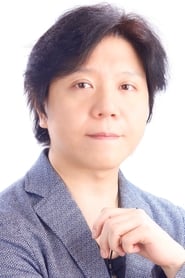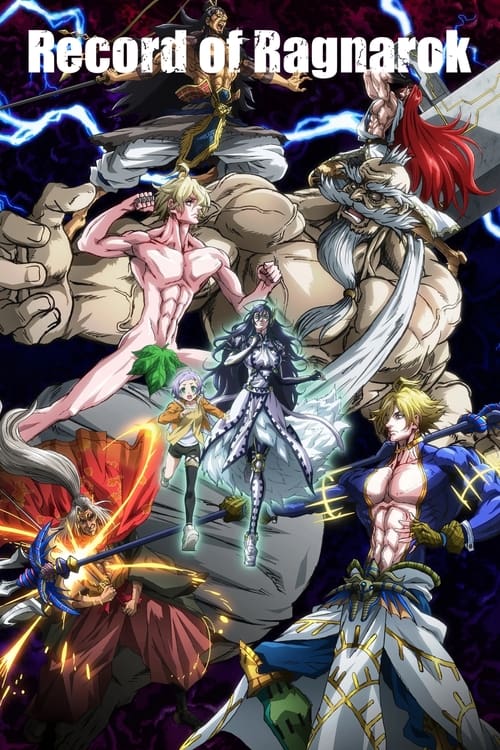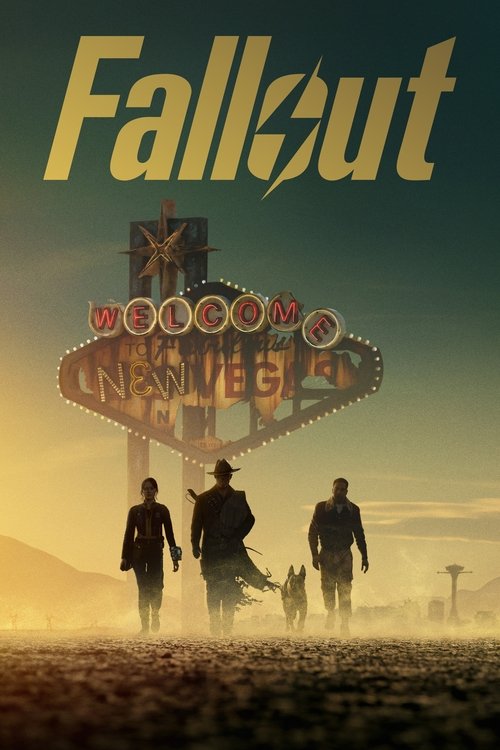
Ask Your Own Question
What is the plot?
In the town of Karakura, Ichigo Kurosaki, a high school student with the ability to see ghosts, encounters Rukia Kuchiki, a Soul Reaper. Rukia is on a mission to eliminate a Hollow, a malevolent spirit that preys on souls. During the confrontation, Ichigo inadvertently absorbs Rukia's powers when she is injured, allowing him to defeat the Hollow. Rukia, unable to regain her powers, offers Ichigo the chance to take on her role as a Soul Reaper, which he reluctantly accepts.
As Ichigo begins his training, he struggles to control his newfound abilities. He learns about the Soul Society, the realm where Soul Reapers reside, and the importance of maintaining the balance between the human world and the spirit world. Rukia, now powerless, stays with Ichigo and helps him hone his skills. Ichigo's friends, including Orihime Inoue, Yasutora "Chad" Sado, and Uryu Ishida, become involved in his journey, each discovering their own latent abilities.
The story escalates when Rukia is captured by the Soul Society for transferring her powers to a human, which is a grave offense. Ichigo, determined to save her, gathers his friends and devises a plan to infiltrate the Soul Society. They face numerous challenges, including powerful Soul Reapers and the complex hierarchy of the Soul Society. Ichigo's resolve strengthens as he confronts various adversaries, including Renji Abarai, Rukia's childhood friend, and Byakuya Kuchiki, Rukia's brother and a captain in the Soul Society.
During the rescue mission, Ichigo battles Renji and ultimately defeats him, showcasing his growth as a Soul Reaper. He then confronts Byakuya, who reveals the truth about Rukia's past and the reasons behind her execution. The fight between Ichigo and Byakuya is intense, with Ichigo pushing himself to the limit. Despite his efforts, Ichigo struggles against Byakuya's superior skills and techniques.
As the battle rages on, Ichigo taps into his inner strength and unleashes his Bankai, a powerful form that significantly enhances his abilities. This transformation allows him to gain the upper hand against Byakuya, leading to a climactic showdown. Ichigo's determination to save Rukia fuels his strength, and he ultimately defeats Byakuya, forcing him to acknowledge Ichigo's power.
With Rukia's execution imminent, Ichigo and his friends race against time to rescue her. They face off against various captains and lieutenants of the Soul Society, including the formidable Sosuke Aizen, who has his own agenda. Aizen's betrayal and manipulation of the Soul Society come to light, revealing a deeper conspiracy that threatens both the Soul Society and the human world.
In a final confrontation, Ichigo and his allies confront Aizen and his followers, leading to a fierce battle. Ichigo's friends, each showcasing their unique abilities, join forces to combat Aizen's powerful subordinates. The stakes are high as they fight to protect Rukia and prevent Aizen's plans from coming to fruition.
As the battle reaches its climax, Ichigo faces Aizen directly. The fight is intense, with Aizen displaying his overwhelming power and mastery of illusions. Ichigo, however, refuses to back down, drawing on his experiences and the bonds he has formed with his friends. In a moment of desperation, Ichigo taps into his inner Hollow, gaining a significant boost in power.
The confrontation culminates in a fierce clash, with Ichigo ultimately managing to land a decisive blow on Aizen. However, Aizen's true nature and abilities are revealed, and he escapes, leaving Ichigo and his friends to deal with the aftermath of their battle. Rukia is saved, but the threat of Aizen and his plans looms over them.
In the aftermath, Ichigo and his friends return to the human world, but the experience has changed them. They have grown stronger and forged deeper bonds, but they are also aware of the ongoing dangers that exist in both the human and spirit worlds. The story concludes with Ichigo reflecting on his journey, the friends he has made, and the battles yet to come, setting the stage for future conflicts and adventures.
What is the ending?
In the ending of the TV show Bleach, Ichigo Kurosaki faces off against Yhwach, the powerful leader of the Quincy. After a fierce battle, Ichigo ultimately defeats Yhwach, but at a great cost. The Soul Society is saved, and peace is restored, but Ichigo loses his Soul Reaper powers. The series concludes with Ichigo living a normal life, surrounded by friends and family, while the remaining characters find their own paths.
As the final arc of Bleach unfolds, the tension escalates with the looming threat of Yhwach, the Quincy king, who seeks to reshape the world according to his vision. The scene opens in the Soul Society, where the atmosphere is thick with anxiety. The Soul Reapers gather, strategizing their next move against Yhwach and his formidable army. Ichigo Kurosaki, the protagonist, stands at the forefront, his determination palpable. He is driven not only by the desire to protect his friends and family but also by the weight of his responsibilities as a Soul Reaper.
The battle begins in earnest as Ichigo and his allies confront Yhwach. The animation captures the intensity of their clashes, with vibrant colors and dynamic movements. Ichigo, wielding his Zanpakuto, Zangetsu, showcases his growth and mastery over his powers. Each strike is filled with emotion, reflecting his resolve to protect those he loves. The stakes are high, and the tension is almost suffocating as Yhwach reveals his terrifying abilities, including the power to manipulate fate itself.
As the fight progresses, Ichigo faces overwhelming odds. Yhwach's confidence is unnerving, and he taunts Ichigo, revealing the depth of his own power. The scene shifts to Ichigo's internal struggle; he grapples with self-doubt and the fear of failure. Flashbacks of his friends, like Rukia Kuchiki and Renji Abarai, fuel his determination. The emotional weight of their shared experiences drives him forward, and he resolves to protect the world they have fought so hard to defend.
In a climactic moment, Ichigo taps into the full extent of his abilities, merging his Shinigami powers with those of his Quincy heritage. The animation crescendos with vibrant energy as Ichigo unleashes a devastating attack against Yhwach. The battle reaches its zenith, and the two clash in a spectacular display of power. The impact of their fight reverberates through the Soul Society, shaking the very foundations of their world.
As the dust settles, Ichigo stands victorious, but the victory comes at a steep price. Yhwach is defeated, but the battle has drained Ichigo of his Soul Reaper powers. The scene shifts to the aftermath, where the Soul Society begins to heal from the devastation wrought by the Quincy invasion. Ichigo, now powerless, faces a new reality. The emotional weight of his loss is evident as he reflects on his journey and the sacrifices made along the way.
In the final scenes, Ichigo returns to the human world, where he is greeted by his friends and family. The warmth of their presence brings a sense of closure. Rukia, Renji, and others find their own paths, with Rukia and Renji preparing for their future together. Ichigo's fate is bittersweet; he has saved the world but must now live without the powers that defined him for so long. The series concludes with Ichigo embracing a normal life, filled with the love and support of those around him.
The final moments capture a serene atmosphere, with Ichigo standing on a hill, looking out over the city. The sun sets in the background, symbolizing the end of one chapter and the beginning of another. The emotional resonance of the series culminates in this moment, highlighting the themes of friendship, sacrifice, and the journey of self-discovery. Each character finds their resolution, and the bonds forged through their struggles remain unbroken, leaving a lasting impact on the audience as the screen fades to black.
Is there a post-credit scene?
In the 2004 anime series Bleach, there is no post-credit scene in the traditional sense that many modern shows utilize. However, the series does feature a unique structure where some episodes include short comedic segments or "bloopers" after the credits, often showcasing the characters in lighthearted, humorous situations.
One notable example occurs in the early episodes, where Ichigo Kurosaki, the protagonist, is often seen in amusing scenarios that highlight his personality and relationships with other characters, such as his interactions with his friends or his encounters with Rukia Kuchiki. These segments serve to provide comic relief and further develop character dynamics, allowing viewers to see a different side of the characters outside of the intense battles and serious plotlines.
While these segments are not traditional post-credit scenes that advance the plot, they do add a layer of charm and humor to the series, making the viewing experience more enjoyable.
What are the origins of Ichigo Kurosaki's Soul Reaper powers?
Ichigo Kurosaki, a high school student, gains his Soul Reaper powers after a chance encounter with Rukia Kuchiki, a Soul Reaper who is injured while battling a Hollow. In a desperate attempt to save his family from a Hollow attack, Ichigo accepts Rukia's offer to transfer her powers to him. This transfer is not without consequences, as it leads to Rukia being unable to fulfill her duties as a Soul Reaper, and Ichigo must learn to navigate his new responsibilities while grappling with the weight of his newfound abilities.
What is the significance of the Soul Society arc in Ichigo's development?
The Soul Society arc is pivotal in Ichigo's development as it marks his first major confrontation with the Soul Reapers and the complexities of their world. After Rukia is arrested for transferring her powers, Ichigo, driven by a sense of justice and loyalty, infiltrates the Soul Society to rescue her. This arc introduces key characters such as Renji Abarai and Byakuya Kuchiki, who challenge Ichigo both physically and emotionally. Ichigo's determination to save Rukia showcases his growth from a reluctant hero to a more confident and capable fighter, as he learns about the responsibilities that come with being a Soul Reaper.
How does the relationship between Ichigo and Rukia evolve throughout the series?
The relationship between Ichigo and Rukia evolves significantly throughout the series, beginning with their initial meeting where Rukia is a mentor figure, guiding Ichigo in his new role as a Soul Reaper. As they face various challenges together, their bond deepens, marked by mutual respect and understanding. Rukia's unwavering support helps Ichigo confront his fears and insecurities, while Ichigo's determination to protect Rukia highlights his growing emotional attachment. Their relationship is tested during the Soul Society arc and later during the Arrancar arc, where they confront the realities of their duties and the sacrifices they must make, ultimately solidifying their connection as friends and allies.
What role does Aizen play in the overarching plot of Bleach?
Sosuke Aizen serves as the primary antagonist in the early arcs of Bleach, orchestrating events from behind the scenes with a calm and manipulative demeanor. Initially introduced as a captain of the Soul Society, Aizen's betrayal reveals his true ambitions to overthrow the Soul King and reshape the world. His cunning intellect and mastery of deception create a sense of dread and uncertainty among the characters, particularly Ichigo and his friends. Aizen's actions, including the creation of the Arrancar and the Espada, drive the plot forward, forcing Ichigo and his allies to confront their own limitations and evolve in order to combat Aizen's overwhelming power.
What is the significance of the Bankai in a Soul Reaper's abilities?
The Bankai is the final and most powerful form of a Soul Reaper's zanpakuto, representing the culmination of their training and mastery over their abilities. Achieving Bankai is a significant milestone for any Soul Reaper, as it greatly enhances their combat capabilities and often reveals deeper aspects of their character. For Ichigo, his Bankai, Tensa Zangetsu, symbolizes his growth and determination, allowing him to harness immense speed and power in battle. The process of unlocking Bankai is often fraught with emotional challenges, as it requires the Soul Reaper to confront their inner self and the true nature of their zanpakuto, making it a pivotal moment in their journey.
Is this family friendly?
Bleach, produced in 2004, contains several elements that may be considered objectionable or upsetting for children or sensitive viewers. Here are some aspects to be aware of:
-
Violence and Combat: The series features frequent battles between characters, including sword fights and supernatural confrontations. These scenes can be intense, with characters sustaining injuries and engaging in life-or-death struggles.
-
Death and Loss: Themes of death are central to the story, as many characters are involved in the afterlife and the Soul Society. The emotional weight of loss and the impact of death on characters can be heavy and may be distressing.
-
Dark Themes: The show explores darker themes such as revenge, despair, and the consequences of one's actions. Characters often face moral dilemmas that can be complex and unsettling.
-
Supernatural Horror Elements: Some creatures and villains in the series are designed to be frightening, with grotesque appearances and menacing behaviors that could be scary for younger viewers.
-
Emotional Turmoil: Characters experience significant emotional struggles, including feelings of loneliness, betrayal, and existential crises, which may resonate deeply and evoke strong feelings.
-
Mature Language and Situations: While the language is generally not explicit, there are moments of strong language and suggestive themes that may not be suitable for all audiences.
These elements contribute to a narrative that, while rich and engaging, may not be appropriate for all children or sensitive viewers. Parents and guardians may want to consider these factors when deciding if Bleach is suitable for their audience.
















